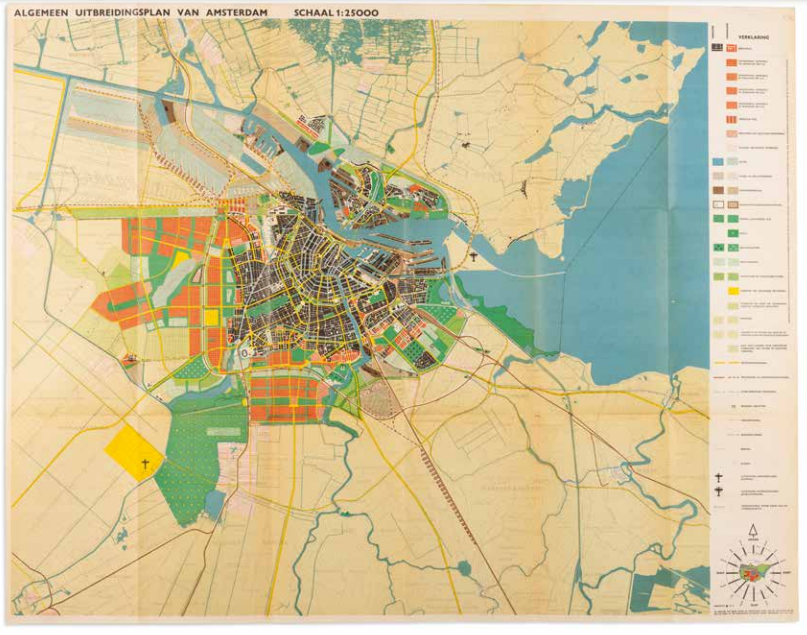Amsterdam as a functional city
Urban designer Cornelis van Eesteren has a significant influence on urban development in the Netherlands. In 1929, he became Director of Amsterdam’s Public Works Department, where he developed the Algemeen Uitbreidingsplan (General Expansion Plan) with Th. van Lohuizen. His approach to designing and drawing is strongly influenced by the ‘Congrès International d’Architecture Moderne’, an international urban planning collective. The group, of which Le Corbusier is also a member, formulates the ‘Athens Declaration’: basic principles of the Functional City. The general expansion plan for Amsterdam was drawn up according to those principles. Implementation doesn’t start until after World War II but dominates urban development until the 1960s. The plan makes the entire region peripheral to the dominant city. It is a sophisticated interplay of ports, industry, infrastructure, green areas, a modestly proportioned Schiphol Airport, and large-scale expansion of residential areas such as Nieuw-West and Buitenveldert. An all-encompassing plan for Amsterdam.

Dienst Publieke Werken Gemeente Amsterdam, Algemeen Uitbreidingsplan van Amsterdam, (Public Works Department of the Municipality of Amsterdam, General Expansion Plan of Amsterdam) Amsterdam 1934. Coll. S/T K.113, 83.5 x 107.5 cm.
